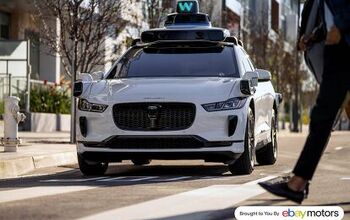The Thirst is Real: Nissan Rogue Sport Gets Worse Fuel Economy Than Larger Rogue Sibling

Less cargo capacity, less horsepower, a lower entry price and … worse fuel economy? That’s the reality for buyers of the 2017 Nissan Rogue Sport, also known as the Nissan Qashqai in Canadian and overseas markets.
The Environmental Protection Agency has released its thirstiness rating for the slightly smaller compact crossover, which was tossed into the Nissan’s North American lineup to fill a narrow gap in the brand’s utility offerings, and some might find the official numbers disappointing.
As we just told you, the entry-level Rogue Sport retails for $2,400 less than the larger Rogue. That $22,380 MSRP buys a front-wheel-drive vehicle with a 2.0-liter four-cylinder and a continuously variable transmission. Pretty standard fare for many vehicles in the segment.
In base trim, the Rogue and Rogue Sport boast the same coefficient of drag (0.33), with the smaller model’s curb weight ringing in at 3,225 pounds — 199 lbs less than the Rogue. At 141 horsepower and 147 lb-ft, the smaller model makes 29 fewer horses and 28 fewer pounds-feet than its 2.5-liter sibling. Both models come equipped with a standard CVT.
While many believe that vehicle size dictates thirstiness, that’s obviously not the case. There’s a myriad of factors that can negatively impact fuel economy. In the Rogue Sport’s case, the combination of smaller engine and very slightly lower curb weight seems to have conspired to shave one mile per gallon from the rating of its more powerful brother.
The Rogue Sport carries a rating of 25 miles per gallon in the city, 32 on the highway, and 28 combined. In contrast, the larger, more powerful, and not all that much more expensive Rogue is rated at 26 mpg city/33 mpg highway/29 mpg combined. For the Rogue Sport, the figures place it below the larger base Mazda CX-5 and Honda CR-V, but above the Toyota RAV4.
Of course, because competitive pricing is Nissan’s forte, cross-shopping buyers are more likely to pay more attention to the numbers that come after “MSRP” than those after “EPA.”
[Image: Nissan]

More by Steph Willems
Latest Car Reviews
Read moreLatest Product Reviews
Read moreRecent Comments
- Merc190 I would say Civic Si all the way if it still revved to 8300 rpm with no turbo. But nowadays I would pick the Corolla because I think they have a more clear idea on their respective models identity and mission. I also believe Toyota has a higher standard for quality.
- Dave Holzman I think we're mixing up a few things here. I won't swear to it, but I'd be damned surprised if they were putting fire retardant in the seats of any cars from the '50s, or even the '60s. I can't quite conjure up the new car smell of the '57 Chevy my parents bought on October 17th of that year... but I could do so--vividly--until the last five years or so. I loved that scent, and when I smelled it, I could see the snow on Hollis Street in Cambridge Mass, as one or the other parent got ready to drive me to nursery school, and I could remember staring up at the sky on Christmas Eve, 1957, wondering if I might see Santa Claus flying overhead in his sleigh. No, I don't think the fire retardant on the foam in the seats of 21st (and maybe late 20th) century cars has anything to do with new car smell. (That doesn't mean new car small lacked toxicity--it probably had some.)
- ToolGuy Is this a website or a podcast with homework? You want me to answer the QOTD before I listen to the podcast? Last time I worked on one of our vehicles (2010 RAV4 2.5L L4) was this past week -- replaced the right front passenger window regulator (only problem turned out to be two loose screws, but went ahead and installed the new part), replaced a bulb in the dash, finally ordered new upper dash finishers (non-OEM) because I cracked one of them ~2 years ago.Looked at the mileage (157K) and scratched my head and proactively ordered plugs, coils, PCV valve, air filter and a spare oil filter, plus a new oil filter housing (for the weirdo cartridge-type filter). Those might go in tomorrow. Is this interesting to you? It ain't that interesting to me. 😉The more intriguing part to me, is I have noticed some 'blowby' (but is it) when the oil filler cap is removed which I don't think was there before. But of course I'm old and forgetful. Is it worth doing a compression test? Leakdown test? Perhaps if a guy were already replacing the plugs...
- Crown No surprise there. The toxic chemical stew of outgassing.
- Spamvw Seeing the gear indicator made me wonder when PRNDL was mandated.Anyone?Anyone?1971


































Comments
Join the conversation
"Of course, because competitive pricing is Nissan’s forte, cross-shopping buyers are more likely to pay more attention to the numbers that come after “MSRP” than those after “EPA.”" And if I know Nissan customers, they'll be even *more* interested in numbers that come after "Only 72 low, low, monthly payments of "
Or, as Jeremy Clarkson calls it, the Nissan Kumquat. He didn't want to try to pronounce Quarashi, and I don't blame him.